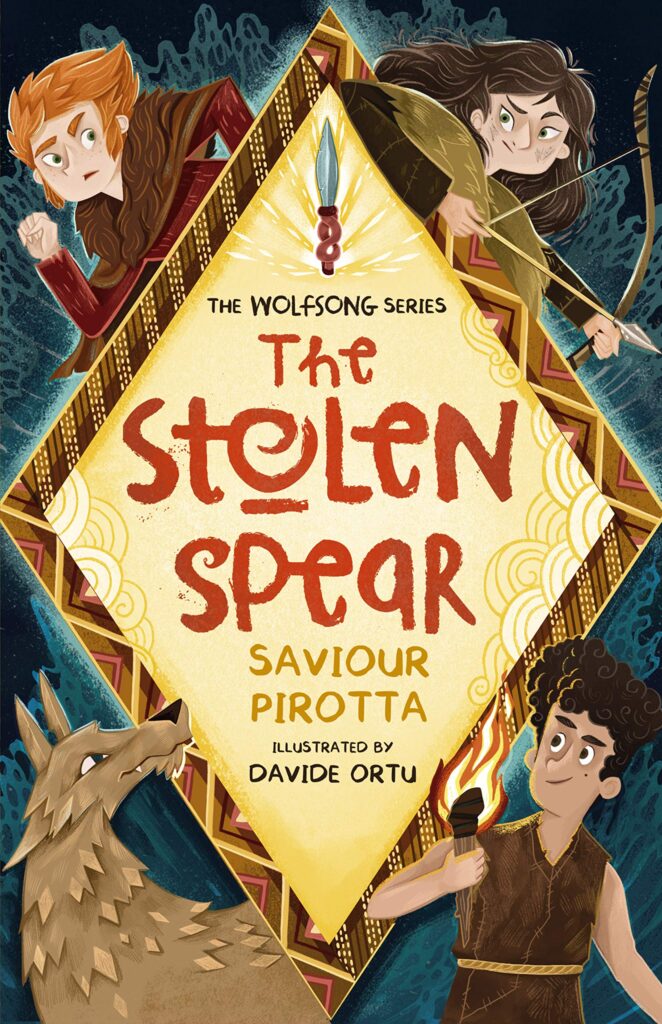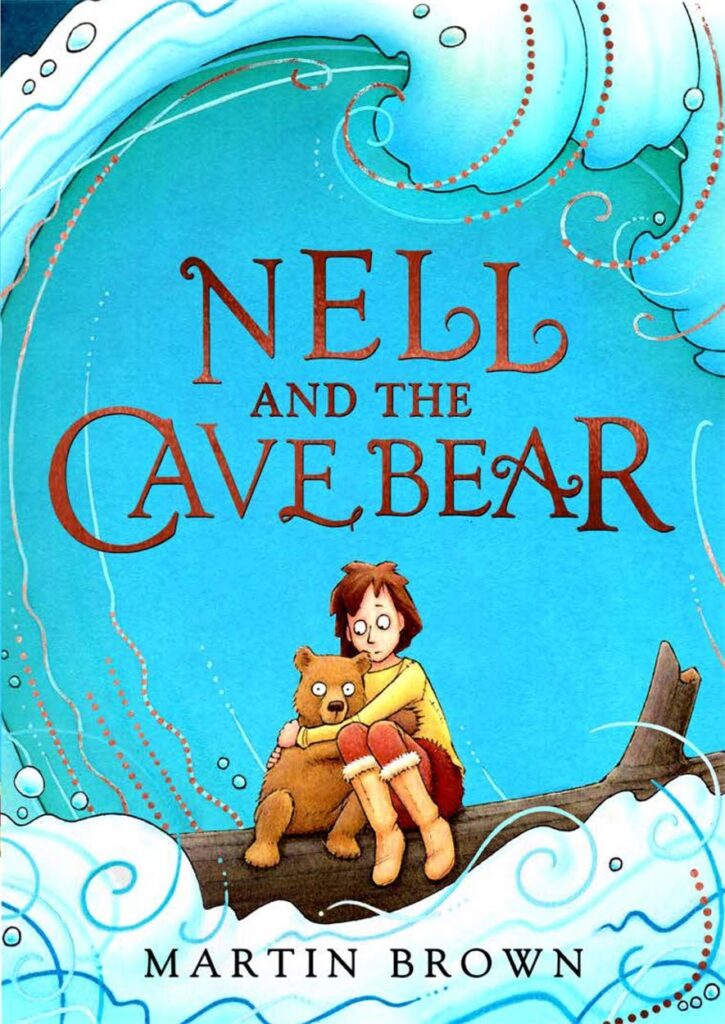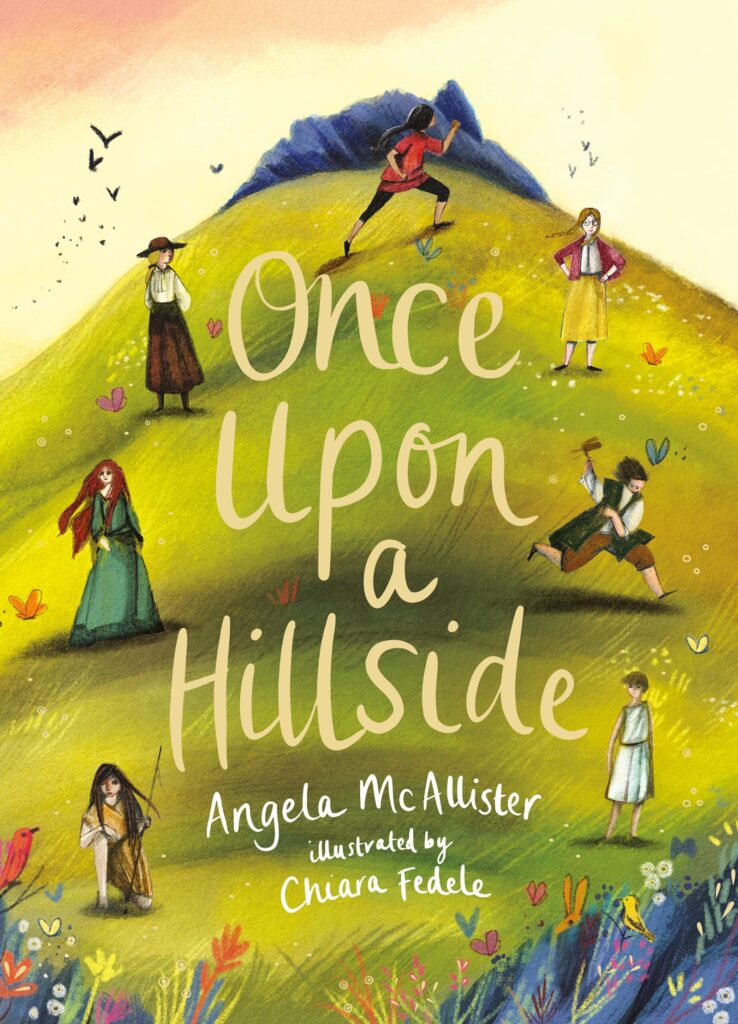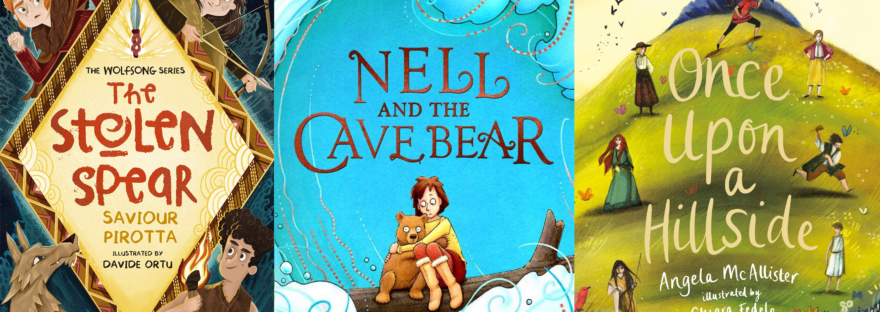Recently we’ve read three books with a Stone Age/Late Neolithic setting that we think would be ideal for adding fiction texts to your teaching topic, especially as fiction based in this time period is relatively rare. Each one focuses on journeys into unknown lands.
The Stolen Spear
We started with The Stolen Spear, the first in ‘The Wolfsong’ series written by Saviour Pirotta and illustrated by Davide Ortu (published by Maverick Publishing).

Set on an island, we meet Wolf and his family, whose village we now know as Skara Brae.
In a society where only bravery counts and weakness is frowned upon, Wolf struggles to find his place in the clan. Soon after he meets a stranger, a sacred spear disappears and all eyes turn to Wolf. His only choice is to leave the only place he knows – his home – to retrieve it.
The story captures the feeling of how different life was in this era but with characters whose friendships and treacheries we would still recognise today, with a message of bravery and self-believe that all of us can appreciate.
It refuses to shy away from some of the darker aspects of the world, such as kidnapping and slavery. The titular spear itself belonged to one of Wolf’s ancestors, and is stolen directly from their burial mound. It’s not often that a children’s book features grave-robbing!
Ortu’s illustrations are a perfect match for the story, ranging from full-page to small drawings such as handprints around the edges of pages, reminiscent of wall paintings. These additions are perfectly balanced to keep you immersed in the story without being intrusive.
One of the most special things about this book is that it’s based on a place that actually exists – Wolf’s village, Skara Brae, is a well-known Neolithic site. This means that when Pirotta describes the landscape of the village, or the layout of the houses, you can visualise them beyond just imagination, giving the story a strong grounding. It would be great used alongside resources about Skara Brae or similar sites.
At the front of the book there is a map of “The Islands” (now known as the Orkneys in Scotland). It’s relatively basic, but gives you a good lay of the land and context for where the village is, along with some charming additions of huts, characters, and animals.
In the back, Pirotta provides some useful discussion points for talking with youngsters about the Neolithic period, as well as the themes and concepts raised in the story. There’s also a section about the author, where he is asked some fun questions that kids can enjoy the answers to!
There are three more books available in the completed ‘The Wolfsong’ series – we have the second one, The Whispering Stones, ready and waiting on our shelf to read!
Nell and the Cave Bear
The next book is Nell and the Cave Bear by Martin Brown (published by Piccadilly Press).

After saving a small cave bear cub, Nell and the cub become inseparable. The adults of the village are not convinced that a cave bear is a suitable pet however.
When Nell overhears some of the women discussing gifts they could give to a visiting clan, and the cave bear cub is considered as an option, Nell decides that the only way to ensure they stay together is to run away.
Thus begins an epic journey into the unknown, travelling through different tribal areas and landscapes that exist beyond their own.
Apart from a few tense moments, this is quite a gentle story, a noticeable contrast to the previous book mentioned. We are introduced to a wide range of different animals and people as Nell and the cub make their journey down the river.
Nell is an orphan, and age-wise in the middle of the village children; while the older ones sneak off, she’s left doing all the chores that the younger ones can’t do yet. She’s doesn’t grumble however. She’s hard-working and sensible, but also caring and drawn to doing what she feels is the right thing.
The cave bear cub is her constant companion, but also has a character of his own. Rather than just following Nell around, he’s fleshed out and humanised. You can see why he appeals to Nell, in the ways that he reacts or his expressions, but it’s never so much that you ever forget that he’s a bear.
It’s a story about friendship – being between two age groups, and with no blood family of her own, Nell doesn’t really have anyone to connect with. So while others view the cave bear cub as just an animal or at best a pet, she views it as a true friend, one she is willing to do anything for.
Contrasting more common illustrations of black and white, Brown’s pictures are in blue and white, making them stand out. They often run along the bottom of two-page spreads, giving you the chance to appreciate the vast countryside or the large gatherings.
To match the charm of the story, they’re also often peppered with humour. There is a wonderful juxtaposition between Nell’s journey and the trials she faces, and seeing her clan’s hunters trying to kill a woolly mammoth for example – especially when the mammoth decides it’s time to chase them instead!
As with the previous book, we get a simple map in the front showing a geological aerial view of the areas surrounding the river that Nell and the cub travel down. It’s very useful for understanding the context for the people she meets along the way, and how they relate to each other, without being overcomplicated.
There is also a section at the back called ‘Cave Bear Care’, providing facts about cave bears, should you ever find yourself in the position of looking after one! It’s a lovely little addition, with illustrations about size changes, and the difference between different types of bear, plus some facts that you might not know yet.
Despite the difficulties Nell and the cub face, it’s a warm story that feels comfortable to read. The second book Nell and the Cave Bear: The Journey Home comes out this March!
Once Upon a Hillside
The last book is Once Upon a Hillside, written by Angela McAllister and illustrated by Chiara Fedele (published by Zephyr).

This book covers six thousand years of life on the same hillside across seven short stories, although the first story is the only one relevant to our topic here.
‘White Bird’ tells of the very first human inhabitants on the hillside; Tani and her clan, who have travelled from their winter camp looking for good grazing and arable land. Using all her senses, Tani explores her surroundings while evading the chores assigned to the women. Uncertain that her place is to bake and weave, she tries to find a way to use her other skills to help the clan.
Not only does this story give a wonderful sense of the unexplored landscape, it also shows the close connection between early humans and their surroundings, and how it was seen as an equal partnership.
Tani is inquisitive and confident, and a naturally good hunter. She is keen to hunt and explore, something that her mother finds frustrating as it means she shirks her “womanly” chores. Her father and her brothers recognise her talent and praise her for it, though her dad is also concerned for her safety, and feels that their clan traditions should be followed.
Although she’s headstrong, she is careful in her actions and makes sure to treat the land according to their rituals and customs. She isn’t actively trying to change how they live, she simply wants to help her clan in the best way that she can.
The background setting of the story differs to our previous books in that Tani’s clan are the first settlers – we’re coming in at the very start of their story, where they are still working out how to live, where to gather water, and the best hunting locations. Given what we know of the period and how people lived, it feels quite true to life.
The opening of each story (not just ‘White Bird’) has a stunning double-page illustration of the hillside during that time period, which are fantastic to compare. The endpapers of the hardback version show the full hillside divided vertically into seven slices, each featuring a different time period.
Following the hillside illustration, Fedele gives us a gorgeous full-page picture of our main character, Tani in this case, before it moves into the body of the story. Throughout the book, illustrations run along the bottom of pages, giving you a sense of beautiful landscapes, and the flora and fauna found there.
At the back of the book, the author urges us to stop, and take some time to look at our surroundings, to really appreciate them and to consider those who came before us. Thinking/discussion points have become more common in children’s books, and we for one welcome them!
The back of the book also features drawings of the various plants and animals that are mentioned throughout the stories. Though it is just labelled images, it’s ideal for showing you what the characters saw, and the style is charmingly old fashioned.
It’s a lovely book, even just the first story, showing us that the people were not a uniform mass, but were as varied then as we are today. And that, although the details and approaches may vary, their base dreams and wishes were not so different from ours.
If any of these books sound like just the thing to boost your topic teaching, you can grab copies at the link below each review.
(Disclosure: If you buy books linked from our site, we may earn a commission from Bookshop.org, whose fees support independent bookshops.)
Looking for more fiction or non-fiction books on history? If so, you can see our previous reviews here.

